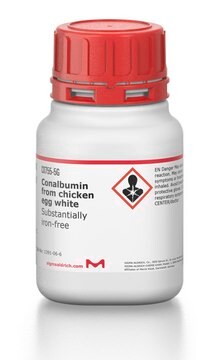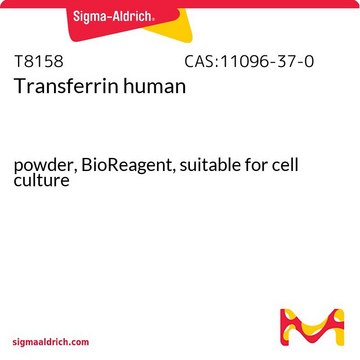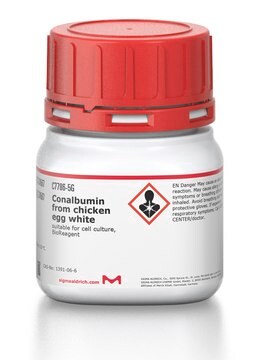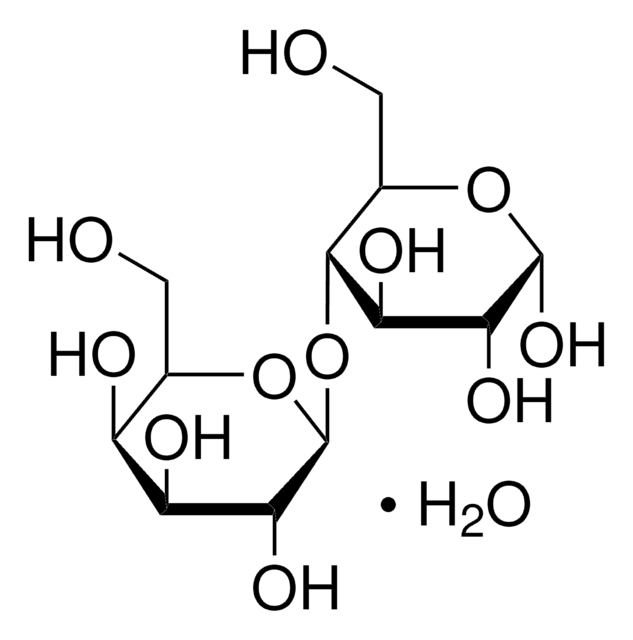G0625
D-(+)-galactose
≥98% (HPLC)
Synonyme(s) :
Galactose
About This Item
Produits recommandés
Source biologique
bovine (Ruminant- Cow, Ox, Buffalo)
Niveau de qualité
Pureté
≥98% (HPLC)
Forme
powder
Technique(s)
HPLC: suitable
cell based assay: suitable
Couleur
white to off-white
Plage de pH utile
5.0-7 (25 °C, 180 g/L)
Pf
168-170 °C (lit.)
Solubilité
water: 180 g/L at 20 °C (68 °F )
Application(s)
cell analysis
genomic analysis
life science and biopharma
Température de stockage
room temp
Chaîne SMILES
OC[C@@H](O)[C@H](O)[C@H](O)[C@@H](O)C=O
InChI
1S/C6H12O6/c7-1-3(9)5(11)6(12)4(10)2-8/h1,3-6,8-12H,2H2/t3-,4+,5+,6-/m0/s1
Clé InChI
GZCGUPFRVQAUEE-KCDKBNATSA-N
Vous recherchez des produits similaires ? Visite Guide de comparaison des produits
Description générale
Furthermore, galactose is a fundamental component of the disaccharide lactose and is released through hydrolysis by β-galactosidase enzymes, playing a vital role in the survival and virulence of bacteria. In Escherichia coli, galactose is utilized through the Leloir pathway, with β-d-galactose serving as a carbon source and β-d-galactose inducing UDP-galactose synthesis for biosynthetic glycosylation. Galactose finds applications in researching metabolic disorders like galactosemia and serves as a substrate for enzymes involved in galactose catabolism, making it a valuable component in galactosyltransferase labeling buffer and a supplement in MRS broth for the growth of thermophilic lactobacilli.
Application
- as a supplement in SGal media to grow yeast strains to examine the role of different Ssa heat-shock proteins (Hsp70) isoforms in Hsp90 chaperoning functions
- as a carbon source in Biolog (MT2) microplate assay to test the ability of isolates to utilize carbon substrates
- to induce expression of membrane protein-green fluorescent protein (GFP) fusion in yeast
Actions biochimiques/physiologiques
Caractéristiques et avantages
- Ideal for Metabolomics, Biochemical and Cell Biology research
- Versatile and adaptable for wide variety of laboratory and research applications
Autres remarques
Code de la classe de stockage
11 - Combustible Solids
Classe de danger pour l'eau (WGK)
WGK 3
Point d'éclair (°F)
Not applicable
Point d'éclair (°C)
Not applicable
Équipement de protection individuelle
Eyeshields, Gloves, type N95 (US)
Faites votre choix parmi les versions les plus récentes :
Déjà en possession de ce produit ?
Retrouvez la documentation relative aux produits que vous avez récemment achetés dans la Bibliothèque de documents.
Les clients ont également consulté
Notre équipe de scientifiques dispose d'une expérience dans tous les secteurs de la recherche, notamment en sciences de la vie, science des matériaux, synthèse chimique, chromatographie, analyse et dans de nombreux autres domaines..
Contacter notre Service technique








